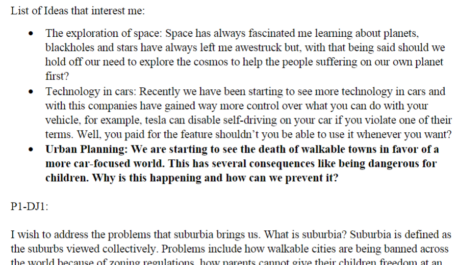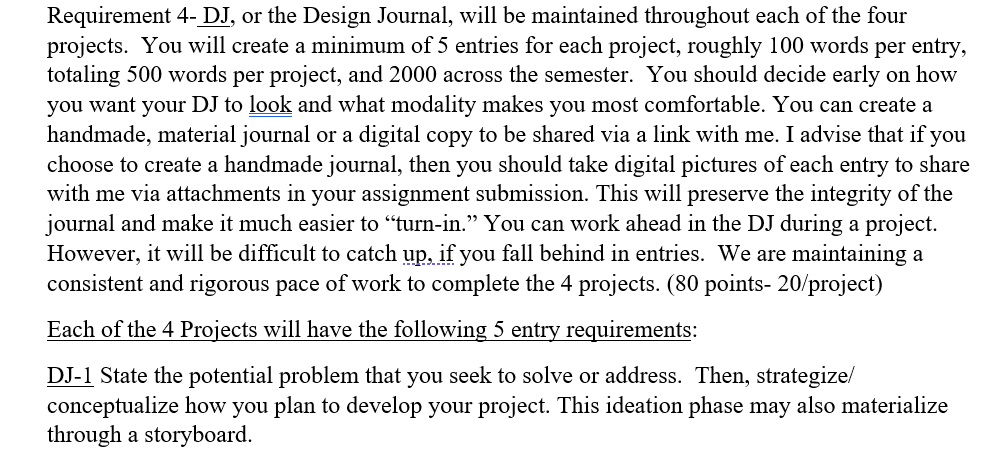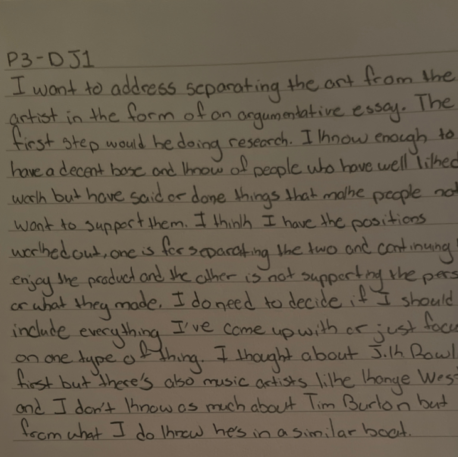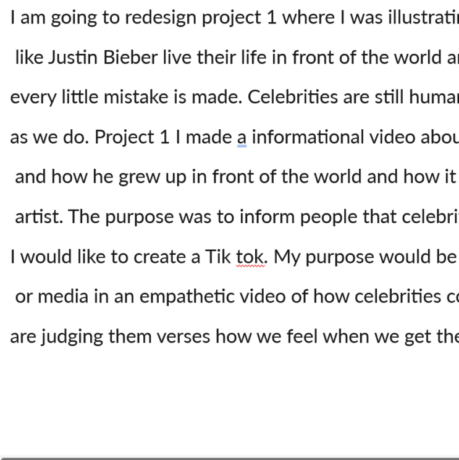
design journal 1 (DJ-1)
define
lesson 1: Design journals
Project 1– “Making a Thing” asked students to identify a problem or issue of their choosing, not assigned by the instructor. Then, they were to develop an original artifact that attended to the problem or issue address fellow peers in our classroom.
Defining a problem or issue using the space of DJ-1 encouraged students to recognize the landscape around them: social, political, economic, physical, academic, domestic, etc. Then, they were more attuned to project possibilities that genuinely interested them. More importantly, the ability to select their topic gave them the opportunity to include their personal perspective in a larger conversation among their peers.
Excerpted from Class Recording:
Project 2– “Pulling a Thing Apart” asked students to break an existing artifact down to a set of features or components for rhetorical analysis. The subject matter could depart from the content of Project 1.
Defining the problem or issue in an existing artifact was a more narrowed task in this next large scale project. Instead of the central yet expansive act of creating in Project 1, students were asked to focus on a set of elements present in the artifact for analysis. This would support students in understanding how the producer argues their position by interrogating the rhetorical choices evident in the artifact.
Project 3– “Discussing Things” asked students to resituate the kind of work they had done previously in Projects 1 and 2 by creating a new artifact that performed an argumentative function in a public space. Students were expected to employ some of the rhetorical strategies analyzed in Project 2 by other producers.
Defining the problem or issue provided the context for student’s arguments. Finding new content assured those students began their Project 3 with a fresh set of eyes. Then, they could consider a position on the matter and collect foundational reasoning to persuade their target audience.
Project 4– “Putting a Thing Back Together, Better” asked students to return to their work in Project 1 equipped with a fresh set of knowledge, tools, and inspiration. They had to redesign their Project 1 by choosing a new modality and new target audience for the redesigned artifact.
Defining the problem in DJ-1 shifted students away from the content of their redesigned project (from P1) and toward determining solutions to a new problem of P4‘s modality. What mode would the redesign assume and how would the mode aptly fit the purpose and audience for the project?




